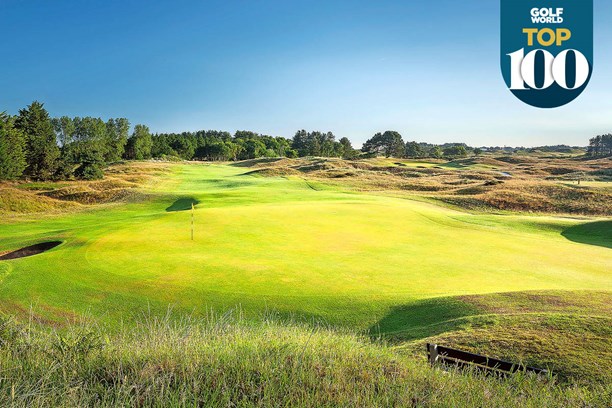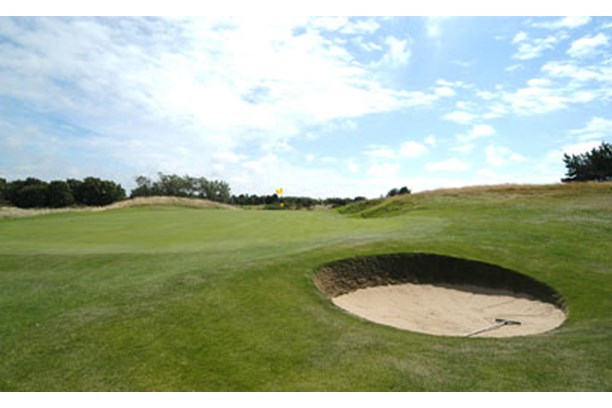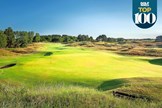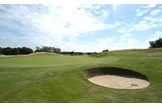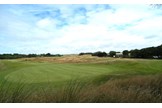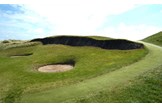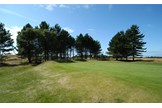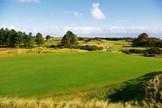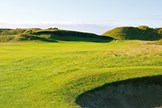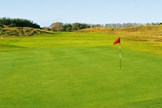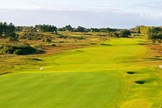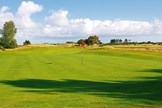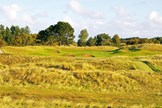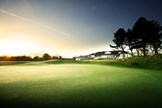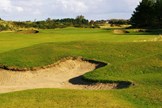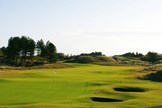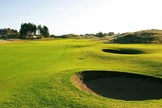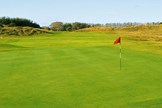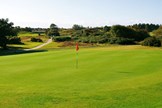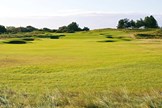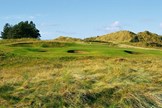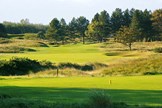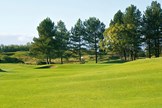Southport and Ainsdale Golf Club
Last updated:
What we say
Southport and Ainsdale Golf Club is best known for its Ryder Cups, but beyond that history lies one of the best golf courses in England.
A full eight decades have admittedly passed since it did so, but it is now extremely hard to imagine the Ryder Cup being held at Southport & Ainsdale as you pull into the car park of this storied club on the Lancashire coast.
A standard golf club barrier gains you entrance to a standard golf club car park, from which you climb up a few stairs towards a homely little pro shop attached to a neat but characterful two-storey clubhouse.
There is nothing extravagant about your first impressions of ’S&A’.
The principal feeling is that this is very different to the experience of arriving at courses that have hosted the Ryder Cup since the mid-80s. In fact, you might laugh to yourself at the thought of all the superfluous stuff that surrounds the Ryder Cup (and The Open) these days fitting in somewhere like S&A
RELATED: Golf World Top 100 Best Golf Courses & Resorts
But if like me you can do without billowing flags, enormous signs, grand driveways, vast car parks and general noisy fanfare, you will agree it is none the worse for that.
S&A can in fact look down on all but one European host of the Ryder Cup, having hosted the matches twice. Only The Belfry – with an overindulged four – tops it.
Those GB&I v USA occasions, in 1933 and then four years later, are part of a storied history of one of England’s great clubs.
Founded in 1906, as early as 1914 it staged the Lancashire Amateur – something it has done eight further occasions, most recently in 2009.
The first professional event to be held here was in 1917, when JH Taylor, Ted Ray and James Braid played an exhibition match to raise funds for soldiers wounded in the war.
It then staged numerous tournaments in the formative years of what was to become the European Tour, including the Dunlop 2000 Guineas, which offered one of the richest prizes in British golf. As a result, few great players have not played here. It was the stage for Jack Nicklaus’ first overseas professional tournament, the Piccadilly tournament in 1962. Five-time Open champion Peter Thompson also played in that event, and in fact won it. Arnold Palmer represented his country here in the Nine Nations in 1965. It is however the twin Ryder Cup matches for which it is best known. Although quite how well known it is that S&A hosted two Ryder Cups is a moot point. It’s hard to escape the feeling its Ryder Cup pedigree should be far more widely recognised than it is. Certainly if it happened today, the venue would be revered… and as we know these days, the venues are selected for more than just the merit of the course.
Back then, the course’s worth was the pre-eminent factor. And this links on the northern edge of Liverpool would greet some of the great names in the game’s history when it staged the two matches.
In 1933 the captains were Walter Hagen and JH Taylor and the contest went down to the last match between Syd Easterbrook and America’s Denny Shute. The latter three-putted the 18th to hand a singles victory to Easterbrook and the match to GB&I. Four years later, Ben Hogan and Henry Cotton captained, but this time the visitors strolled to a 8-4 victory with a young Byron Nelson their star man.
RELATED: Hillside Golf Club review
S&A’s storied existence continues to this day, with the head pro a celebrated golfer, having won two European Tour titles and played in The Open on four occasions.
Jim Payne forged a stellar amateur career that culminated in a Walker Cup appearance and a pairing with Nicklaus in the final round of the 1991 Open at Royal Birkdale, when he finished as the leading amateur.
He was Rookie of the Year on the European Tour and won the 1993 Turespana Iberia Open and 1996 Italian Open, but now he has to content himself with an epic view from his pro shop every day he’s at work.
It is hard to think of an opening hole on any Ryder Cup venue which you’d rather play than S&A’s.
Starting with a par 3 is widely thought to affect pace of play – and especially when it is as exacting as this one – but seeing the full hole from the clubhouse and starter’s hut in this manner has loads of appeal.
This 204-yard opener plays downhill to a small green pock-marked by nine bunkers, scattered randomly around its front half. On a calm day or with a breeze helping it feels like a gorgeous start to a round; with conditions not in your favour, reaching for a three-wood for your first swing of the day with which to try to locate this narrow, undulating green is less appealing.
Even in that scenario however, the idyllic links scene has you already engrossed.
It is followed by a handsome par 5 that shows off typical S&A landscape; heather mixing with marram and gorse as it frames gently undulating linksland punctuated by pot bunkers.
Then comes ‘Braids’, named after the course’s designer, James Braid. The Scotsman was drafted in to set down the course in the 1920s after the original layout was split in two by a new Liverpool link road.
After the muscular two-shot 3rd comes a mid-length par 4 which starts from an elevated tee as several holes do here. It plays to one of S&A’s most undulating greens.
So, so far we have had a par 3, a par 5, a stout par 4 and a sporty two-shotter, the start illustrating the pleasingly eclectic mix you can expect at S&A.
RELATED: Royal Liverpool Golf Club review
The 4th turns back south and the 5th – a worthy stroke one and a magnificent driving hole – and dog-leg 6th with its blind tee shot follow in that direction to complete the first of S&A’s loops.
The next section, from the 7th to the 12th, snakes in a northerly direction like an unruly ‘S’ before the run for home begins around the western edge of the outside of the site.
Out of bounds features on par 5s at 7 and 9 – strategic and awkward in turn – which sandwich a wonderful short hole. The 8th is just 150 yards but often plays into the prevailing, and its elevated, infinity green rejects anything short or slightly right. The surface is also notably undulating and this can stand comparison with most short holes in even this preposterously well-endowed golfing region.
Coming home, the blind drive over gorse on 12 and the very well-bunkered 13th catch the eye before you move into the trees on the mid-length par-4 15th for what the club’s Strokesaver accurately describes as “the calm before the storm”.
Then comes the famous ‘Gumbleys’. This 528-yard par 5 has out of bounds up the right where the railway is but is in truth a relatively straightforward tee shot. From there, though, you must launch your second over a 20ft high bank of sleepers that flag up one of England’s great bunkers, and hope you have picked the correct line and club.
The walk to the top of the dune is a little nervy but mainly exhilarating as you wait to spy your ball and take in the wonderful linksy scene. The work isn’t over though, with a long narrow green set at the foot of other dune to find.
It starts a very strong three-hole finish with arguably the best hole on the course (see previous page) and a super climax in a terrific ‘snug’-like amphitheatre to round off what is a super collection of green complexes.
As you putt on the funky home green, you might think of Shute’s costly three-putt in 1933. The Ryder Cup will never return to S&A or its ilk, but it’s hard not to think that is the competition’s loss.
-
Course Summary
- Costs -
- TG Rating
- Players Rating
- Address Bradshaws Lane, , SOUTHPORT
- Tel 01704 577316
- Website www.sandagolfclub.co.uk
Course Information
| Course | 72 par |
| Course Style | - |
| Green Fees | - |
| Course Length | 6,802 yards (6,220 metres) |
| Holes | - |
| Difficulty | - |
| Course Membership | - |
Course Features
- Course has: Bar
- Course has: Buggy Hire
- Course does not have: Driving Range
- Course does not have: Practice Green
- Course has: Pro Shop
- Course has: Restaurant
- Course has: Trolley Hire
- Course does not have: Dress Code
- Course does not have: Club Hire
- Course does not have: Handicap
Your Reviews
-
Stunning Greens
Fantastic course in top condition. Well defined fairways etc. Greens were fabulous. Suggest you take a gps/course planner otherwise you may stray into one of those fairway pot-bunkers.
-
cracking
enjoyed this course (but not as much as hillside just over the railway line). tough par 3 1st, but best hole is GUMBLEYS ! o/a its quite flat and a good test. check out the pics in the clubhouse of past ryder cups
-
cracking
enjoyed this course (but not as much as hillside just over the railway line). tough par 3 1st, but best hole is GUMBLEYS ! o/a its quite flat and a good test. check out the pics in the clubhouse of past ryder cups
-
cracking
enjoyed this course (but not as much as hillside just over the railway line). tough par 3 1st, but best hole is GUMBLEYS ! o/a its quite flat and a good test. check out the pics in the clubhouse of past ryder cups
-
a great course
this course is amazing. one of James Braids greatest creations and boy it is a monster. not a traditional out and in layout but it is amazing. there is no good way for a prevailing wind here because every hole you want it. some great blind shots and elevated tees. holes to see for yourself would include the 204 par 3 first which is protected by about 7 or 8 pot bunkers, the 3rd, a short par 4 with a 35 foot elevated tee looking onto a wide fairway and 16th a short 500 yard par 5 with a mound faced with sleepers and 2 deep bunkers some 300 yards down the fairway. and thats just to name a few. this is a great course when the wind is down but completely impossible to play with wind as a slight breeze in the winter is something of a rareity.
